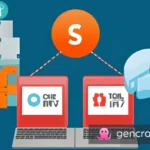Table of Contents
Introduction
In the world of software development, keeping your project up to date is essential for maintaining its functionality, security, and performance. Upgrading your project’s version allows you to incorporate bug fixes, introduce new features, and improve overall user experience. This article will delve into the importance of upgrading and provide insights on how to perform version upgrades effectively.
Why Upgrade Your Project’s Version?
- Bug Fixes and Stability: Upgrading your project’s version ensures that any known bugs or issues from the previous version are addressed. Bug fixes enhance the stability of your project, reducing the risk of crashes, errors, or unexpected behavior.
- Security Enhancements: Software vulnerabilities are constantly evolving, and new threats emerge regularly. Upgrading your project helps you stay one step ahead of potential security risks by incorporating the latest security patches and safeguards.
- Performance Optimization: Version upgrades often include performance optimizations, resulting in faster execution, improved resource utilization, and better scalability. These enhancements can significantly enhance the user experience, especially in resource-intensive applications.
How to Upgrade Your Project’s Version
The process of upgrading your project’s version depends on the versioning scheme you follow. Here are three common scenarios:
- Patch Version Upgrade (1.0.0 -> 1.0.1): A patch version upgrade typically includes minor bug fixes, documentation updates, or performance tweaks. To perform this type of upgrade, follow these steps:a. Identify the changes included in the new version, such as bug fixes or enhancements. b. Backup your project and any relevant data. c. Update the necessary dependencies or libraries to their latest compatible versions. d. Apply the code changes specific to the upgrade, ensuring compatibility with existing code. e. Test the upgraded project thoroughly to validate its stability and functionality.
- Minor Version Upgrade (1.0.0 -> 1.1.0): A minor version upgrade introduces new features, improvements, or enhancements without breaking existing functionality. The following steps can guide you through this process:a. Review the release notes or documentation for the new version to understand the changes and new features. b. Back up your project and its data. c. Update any dependencies or libraries, ensuring compatibility with the new version. d. Implement the new features or enhancements, considering any necessary modifications to the existing codebase. e. Conduct comprehensive testing to verify that the upgraded project functions as expected.
- Major Version Upgrade (1.0.0 -> 2.0.0): A major version upgrade signifies significant changes that may introduce breaking changes, architectural modifications, or major feature enhancements. Follow these steps for a successful major version upgrade:a. Study the release notes, documentation, or migration guides to understand the changes, deprecations, and breaking points. b. Back up your project, data, and configurations. c. Assess any third-party dependencies or libraries for compatibility with the new version and update them accordingly. d. Analyze the impact of breaking changes on your existing codebase and modify it accordingly. e. Rigorously test the upgraded project to ensure all functionalities work as expected.
Conclusion
Regularly upgrading your project’s version is crucial for maintaining its performance, security, and stability. By following the appropriate upgrade process based on the versioning scheme, you can incorporate bug fixes, security enhancements, and new features seamlessly. Remember to always back up your project and thoroughly test the upgraded version before deploying it. Stay up to date with the latest version releases and leverage the benefits they offer for your project’s success.











